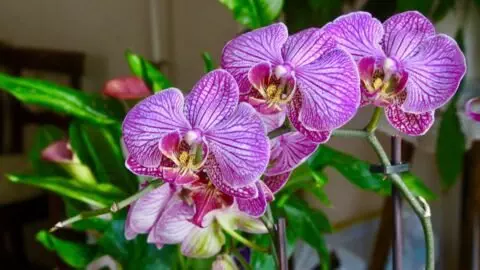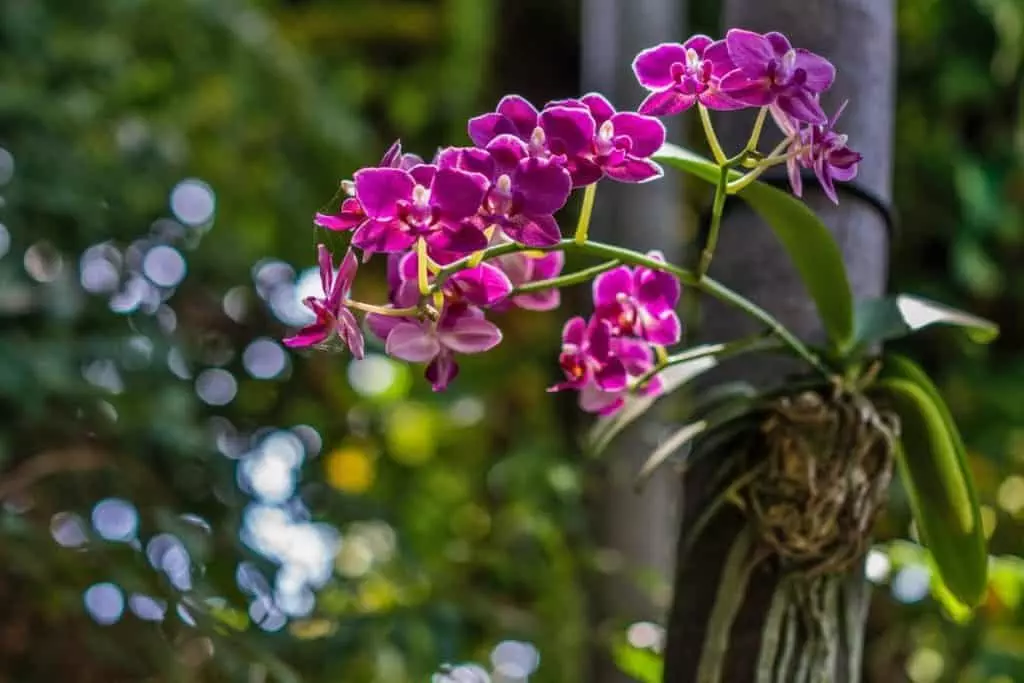Welcome to our guide on orchid humidity! If you’re an orchid enthusiast or a beginner looking to grow these beautiful flowers, understanding the importance of humidity is crucial. In this article, we’ll explore the ideal humidity levels for orchids, how to measure and maintain humidity, and answer some frequently asked questions. Let’s dive in!
Why is Orchid Humidity Important?
Orchids are native to tropical regions where humidity levels are naturally high. Replicating these conditions in your home or greenhouse is essential for the health and well-being of your orchids. Adequate humidity helps orchids:
- Prevent dehydration: Orchids have aerial roots that absorb moisture from the air. High humidity ensures these roots stay hydrated, preventing dehydration and wilting.
- Support proper respiration: Orchids have specialized structures called stomata on their leaves that allow them to exchange gases with the environment. Optimal humidity levels facilitate this process, ensuring proper respiration.
- Promote healthy growth: Adequate humidity encourages the growth of lush foliage, vibrant blooms, and strong root systems.
- Prevent pests and diseases: Dry air can attract pests like spider mites and mealybugs, while high humidity discourages their presence. It also helps prevent fungal and bacterial diseases that thrive in dry conditions.
What is the Ideal Humidity Level for Orchids?
The ideal humidity level for orchids generally falls between 50% and 70%. However, some orchid species have specific humidity requirements. Here are a few examples:
| Orchid Species | Ideal Humidity Level |
|---|---|
| Phalaenopsis | 50% – 70% |
| Cattleya | 40% – 60% |
| Dendrobium | 60% – 80% |
It’s important to research the specific humidity requirements of your orchid species to ensure optimal growth and blooming.
How to Measure Humidity for Orchids
Measuring humidity is essential to maintain the ideal conditions for your orchids. Here are a few methods you can use:
- Hygrometer: A hygrometer is a device specifically designed to measure humidity levels. Place it near your orchids to get an accurate reading.
- Psychrometer: A psychrometer measures humidity by comparing the readings of a wet bulb thermometer and a dry bulb thermometer. This method is commonly used by professional orchid growers.
- Smart Sensors: There are various smart sensors available in the market that can be connected to your smartphone or computer to monitor humidity levels remotely.
Choose the method that suits your needs and budget to ensure you can consistently monitor the humidity levels for your orchids.
How to Maintain Orchid Humidity
Now that you know the importance of humidity and how to measure it, let’s explore some effective ways to maintain the ideal humidity levels for your orchids:
1. Grouping Orchids
Grouping orchids together can create a microclimate with higher humidity. As orchids transpire, they release moisture into the air, increasing the humidity around them. This method is particularly useful if you have a small collection of orchids.
2. Humidity Trays
Humidity trays are shallow trays filled with water that you can place beneath your orchid pots. As the water evaporates, it increases the humidity around the plants. Be sure not to let the pots sit directly in the water to avoid root rot.
3. Misting
Misting your orchids with water can temporarily increase humidity levels. However, be cautious not to mist too frequently, as it can lead to fungal and bacterial diseases. Misting is most effective when done early in the day, allowing the leaves to dry before nightfall.
4. Humidifiers
Using a humidifier is an excellent option for maintaining consistent humidity levels, especially in dry climates or during winter when indoor heating reduces humidity. Choose a humidifier with adjustable settings and place it near your orchids.
5. Terrariums or Orchidariums
Creating a terrarium or orchidarium is an advanced method for maintaining high humidity levels. These enclosed environments provide a controlled atmosphere for your orchids, ensuring optimal humidity. However, it’s important to monitor temperature and airflow to prevent excessive moisture buildup.

FAQs on Orchid Humidity
Q: Can orchids tolerate low humidity?
A: While orchids prefer higher humidity levels, some species can tolerate lower humidity for short periods. However, prolonged exposure to low humidity can lead to stunted growth, wilting, and increased susceptibility to pests and diseases.
Q: Can I use a humidifier at night for my orchids?
A: It’s generally not recommended to use a humidifier at night as it can create excessively high humidity levels, leading to fungal and bacterial diseases. Orchids also benefit from a slight drop in humidity during the night, mimicking their natural environment.
Q: How often should I mist my orchids?
A: Misting your orchids once or twice a week is usually sufficient. However, it’s important to observe the moisture levels in the growing medium and adjust misting frequency accordingly. Avoid misting too close to blooming periods to prevent damage to delicate flowers.
Q: Can I use a dehumidifier for my orchids?
A: While dehumidifiers are useful for reducing excess humidity in a room, they may not be necessary for orchids unless the humidity levels consistently exceed the ideal range. It’s important to strike a balance and avoid creating an environment that is too dry for your orchids.
Conclusion
Orchid humidity plays a vital role in the overall health and success of your orchids. By understanding the ideal humidity levels, measuring and maintaining humidity, and implementing effective methods like grouping, humidity trays, misting, humidifiers, or terrariums, you can create the perfect environment for your orchids to thrive. Remember to research the specific humidity requirements of your orchid species and monitor their response to ensure optimal growth and blooming. Now go ahead and create a tropical paradise for your orchids!
Fun Fact: Did you know that orchids are one of the largest families of flowering plants, with over 28,000 recognized species? From tiny miniatures to large, showy blooms, there’s an orchid for every enthusiast to enjoy!
Originally posted 2023-10-01 11:43:42.



